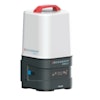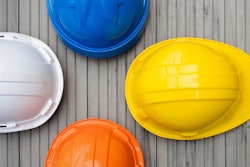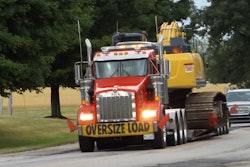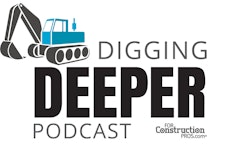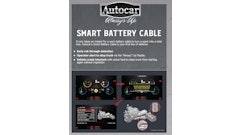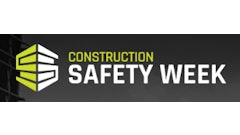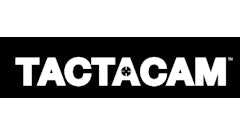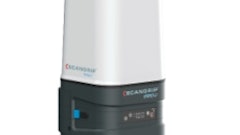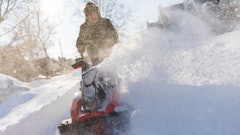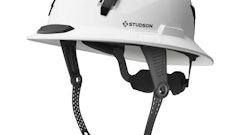
In the new normal of COVID-19 recovery, we are revisiting the Top 10 Construction Safety Tips to reflect 2020 safety best practices. We all thought the rollover of the new decade in January was going to be a bit brighter. Little did we know!
The Top 10 tips this time around are more cerebral and oriented to long-term strategy. They should be helpful just in case you plan to be in business five or 10 years from now.
1. Everything in the Safety Business Has Changed
Like it or not, the traditional model of “do what the rules say” is history. A world-class safety program should reflect these three key elements: Leadership, employee engagement and continuous improvement.
Deconstructing these elements translates as follows:
Managers manage “things.” Leaders lead people. Leadership is a critical trait in any organization, including your safety program. Some pieces can be delegated, but the guy at the top of the food chain needs to show “skin in the game.”
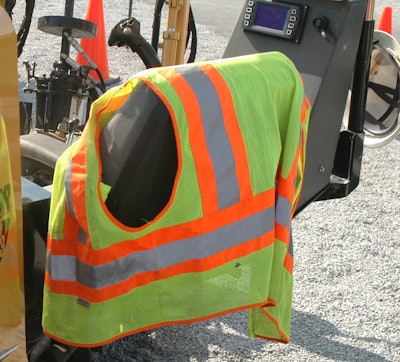
The last of the three elements is complimentary: “We are really good at what we do.” Likewise for the competition.
Incremental improvement. Incremental improvement over time is the Gold Standard. Safety, hardware, tooling, processes, materials, QA, metrics, digital apps, etc., are all in play. Take a page from the QA/QC playbook and adopt continuous improvement into your safety systems.
One example of this can be seen in the job hazard analysis (JHA) process. At the conclusion of the job, ask yourself: “What did we learn from this? How can we do it better/safer next time?” There’s a place to record this on the JHA form.
2. Avoid a Compliance Mentality
Being able to say “we comply” is no longer good enough. In fact, it’s a sign of an early fail! If you are content with achieving regulatory compliance, you’re missing the safety boat.
The fact is most large contractors are asking their subs for a Site Safety Plan that exceeds OSHA specs. This is an example of “new normal.”
Regulatory compliance is considered the absolute minimum acceptable level of safety assurance – and it is a woefully thin level. Even an Intermediate grade Safety Program will exceed OSHA standards.
3. Prepare to Sweat
 Prepare for micro-climate engineering on the jobsite, where everything from employee dress and PPE to diet, fatigue, wellness and health factors increasingly come into play. Photo by Giorgio Parravicini on Unsplash
Prepare for micro-climate engineering on the jobsite, where everything from employee dress and PPE to diet, fatigue, wellness and health factors increasingly come into play. Photo by Giorgio Parravicini on Unsplash
Prepare for micro-climate engineering on the jobsite. Employee dress and PPE, diet, fatigue, wellness and health factors, hardware, cooling accessories, etc., will increasingly come into play. This is not particularly complex, but employers need to adopt heat stress management as an element of their safety program.
18 Tips to Stay Cool on the Jobsite in the Summer Heat
OSHA and a number of state plans are looking at adopting a Heat Stress Standard as soon as they get past the COVID-19 debacle.
4. Employee Wellness Programs
Employee wellness programs are becoming the norm on a lot of projects. Enlightened employers will offer information and counseling on a wide range of topics:
- Dietary
- Health screening by on-site nurse
- Smoking cessation assistance
- Obesity management guidance
- Hypertension screening
- Alcohol abuse programs
- Suicide prevention information, local hotline
- Opioid and substance abuse counseling, etc.
Get the junk food and soda pop out of the vending machines and off of the food trucks. Incentivize the food trucks and vendors to offer a healthy meal choice. (Or at least smaller portions of fries!)
It's Time to Focus on Wellness, Not Just Safety
5. Close Call and Near Miss Reporting
Basically, these are leading indicators and reporting should be ramped up. The military calls it “lessons learned.”
Encourage all people in your organization to be on the lookout and report near misses. Record and analyze the reports and push the learnings back out for general crew awareness.
This is important on jobs with high repetition, because the same mistake can happen again – with worse consequences – unless you interrupt the chain of occurrence.
6. Write Your JHA on Steroids
Start a library of JHAs for your most common jobs. Update and revise the JHA document as needed.
Learn from the JHA, not just pencil-whip it. Correctly completed, a JHA has an After-Action Review section. This is the essence of continuous improvement – focus on it!
Best Practice Tip: Engage as many people in the process as possible, including your safety committee.
7. There’s an App for That
 Photo: Przemyslaw Marczynski via Unsplash.com
Photo: Przemyslaw Marczynski via Unsplash.com
- Camera and video recording
- Highly accurate noise meter
- Dimensional measurement instrument
- Inspection and audit forms
- Meeting records and digital signatures
- Document library – procedures, manuals, instructions, etc.
By the time you read this, there will probably be a COVID-19 app. There’s a new construction app being announced about once a week.
8. Pandemic Preparedness Response and Management Plan
We all learned a crash course in industrial hygiene as a result of this pandemic. If we had sheltered in place and wore face coverings a month earlier, there could have been a fraction of the losses.
The big safety vetting agencies like ISN and Avetta were asking the question 10 years ago: “Does your organization have a Pandemic Preparedness Plan.” We all thought this was a paper exercise – until it wasn’t.
Structure a written preparedness plan that makes sense for your organization.
OSHA Issues Guidance to Help Construction Workers During the Coronavirus Pandemic
9. More on the Pandemic
COVID-19 is going to be around for a while. Your written Pandemic Response Plan needs to cover a lot of acreage:
- how you will communicate health information to employees, because group meetings are going to be socially distant;
- postings and electronic handouts;
- quarantine intervals from visiting questionable or known hot spots;
- temperature stations, etc.
If your project has an on-site nurse/first-aid provider, they’re also part of the picture.
 The COVID-19 pandemic has taught the importance of having a written Pandemic Preparedness Response and Management Plan. Photo CDC via Pexels.com
The COVID-19 pandemic has taught the importance of having a written Pandemic Preparedness Response and Management Plan. Photo CDC via Pexels.com
- Set up hand washing stations vs. sanitizer bottles.
- Minimize touch surfaces throughout the job as much as possible.
- Educate and equip custodial staff in best practices. For example, a pressurized pump sprayer is preferred to a squeeze bottle dispenser. Squeezing a handle all day to dispense soap is going to cause issues. In other words, look beyond the immediate issue of “keep it clean” to the “how we are going to do it.”
- Include best sanitary practices in your safety meetings. For example, explain the protocol for quarantine if someone is sick – do not come to work because it can affect others.
- Distribute face coverings freely and encourage proper use when people are indoors or in proximity to one another.
- Plan for separation of trades when possible using a 6-ft. distance as a guide.
- Educate your population on sneeze and cough etiquette.
- Encourage employees to take safety and health home with them. Family first!
10. PPE and Gear
Take advantage of the new safety hardware and gear flooding the market:
- composite materials
- engineered fabrics for cooler garments
- new hard hat designs
- ANSI performance-rated gloves, tool tethers
- high-visibility apparel and accessories
- ergonomic-friendly tools and hardware
- improved illumination, etc.
This category dovetails with your continuous improvement strategy and employee involvement. It’s an important element because the trades typically love new “stuff.” Take advantage of the new gear coming into the safety marketplace.
[PODCAST] PPE Best Practices with Safety Expert John Meola
Bonus Tip: Get your Safety Focus Committee involved in doing trials and evaluations of new PPE, tooling, hardware and products. Build relationships with local vendors; avoid catalog sales. Bring in guest speakers to safety meetings to broaden the horizon.
Safety in Summary
We are increasingly a highly connected society, including your field crews. Social media has pretty much guaranteed transparency among your workers and a lot of other folks, including regulatory agencies.
Design your safety and health program to be open, inclusive, honest and forthcoming. The Top 10 is just a start for best practices. Keep the program moving and engage! Safety and health are no longer just a matter of following the rules.



